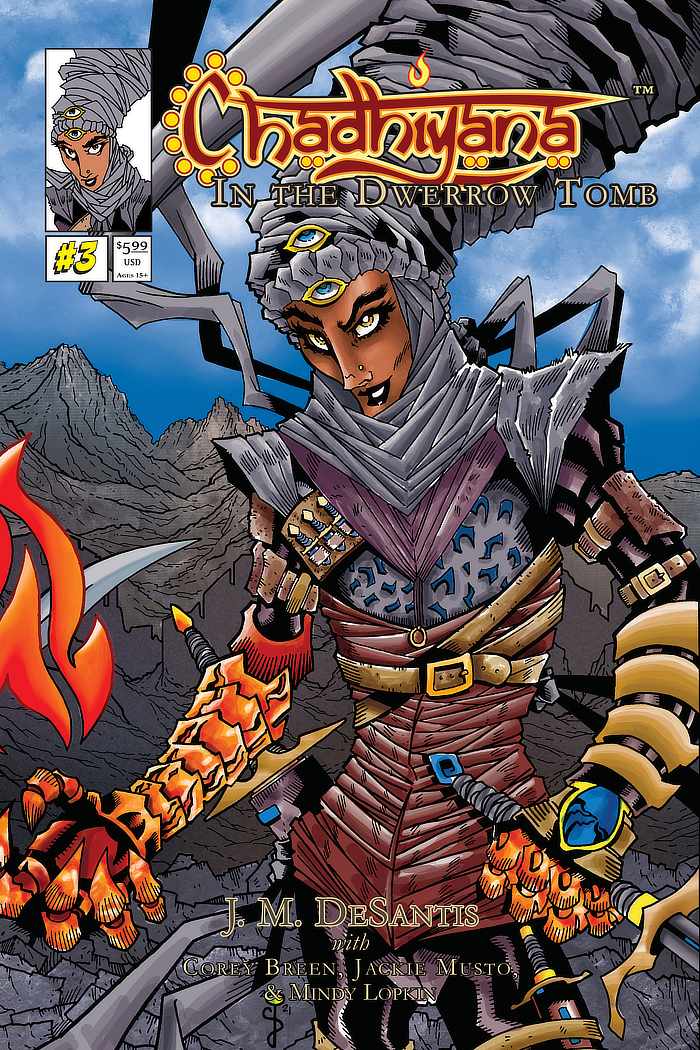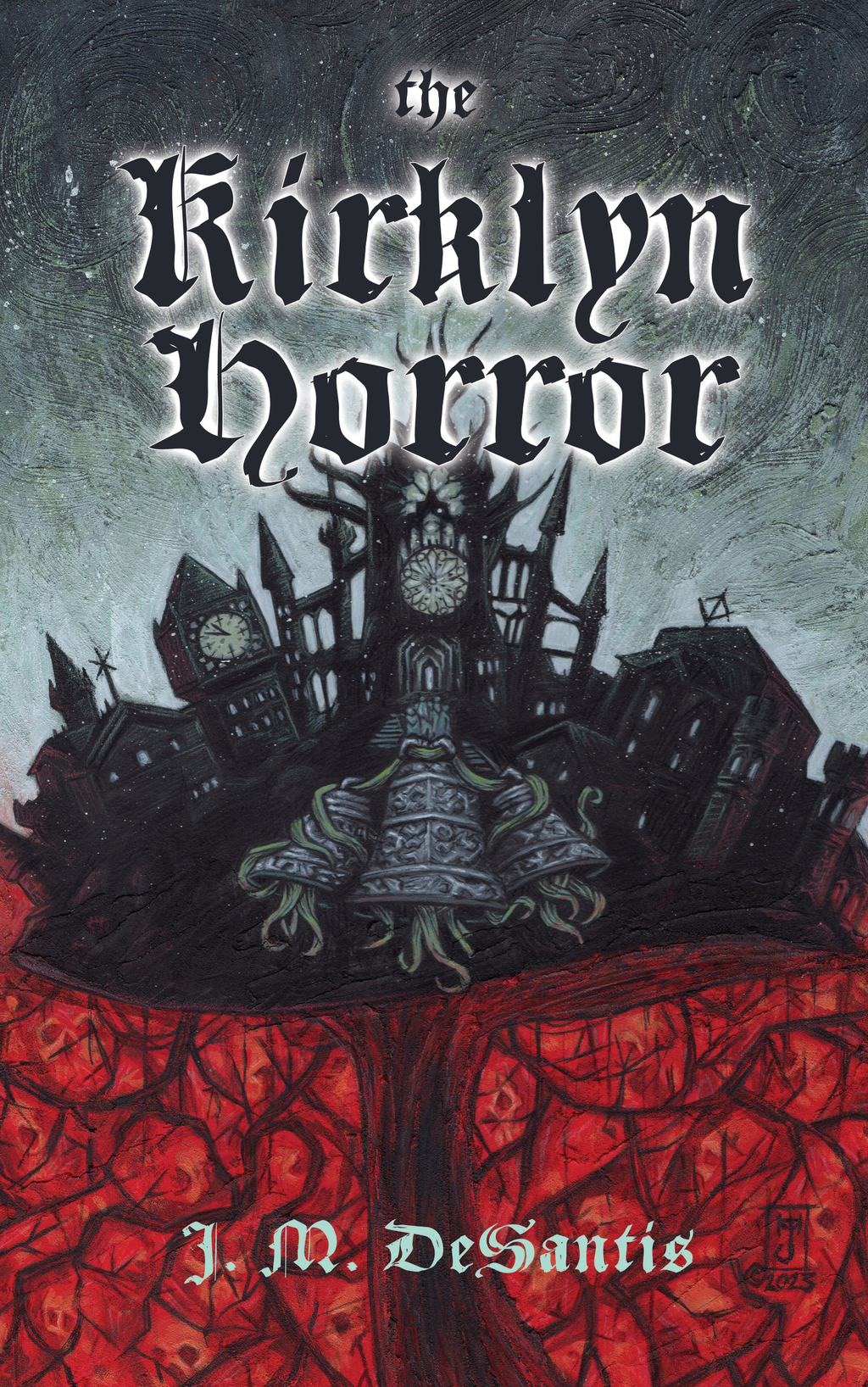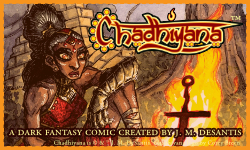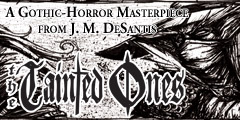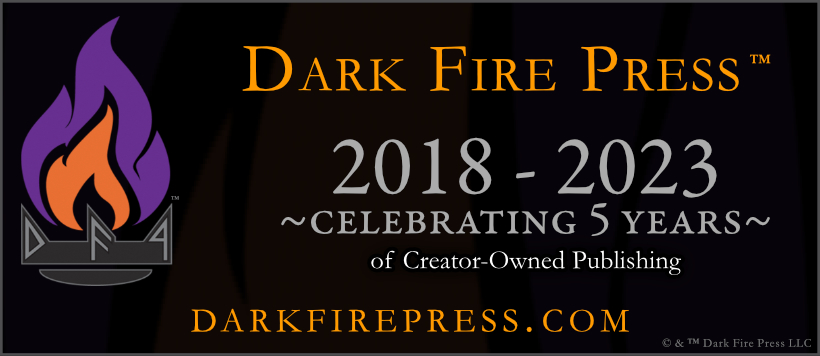The Problem of Chapter Breaks in a Graphic Novel Script

NOTE: I wrote the following late last year, and have since found a way of solving the problem for myself (though I’m certain I’ll be re-thinking this solution again someday). That said, I decided to post the following anyway, for what it’s worth.
I tend to be a very heady person, in case some of you who read this blog regularly or semi-regularly didn’t already know. Often I’ll overthink a thing to the point it becomes dizzyingly abstract. Perhaps the following will be deemed such an example, though I would argue my overthinking here has much to do with the lack of any real, concrete rules to follow. Specifically, I’m talking about the lack of a definitive comic script format and how that effects a particular aspect of script writing I’ve not once seen discussed: how to indicate chapter breaks in a graphic novel script?
Now, I realise there are a multitude of script formats for comic writing, and perhaps that’s part of the problem. For the record, I use something like the “Dark Horse method”, and I’ve been writing comics that way since before I knew there was a Dark Horse. I’m not quite certain where I found the format, but as a child, when I was writing and drawing my own Sharpied-and-coloured-penciled, staple-bound comics, I was using some version of this format (yes, even at ten years old, I’d write a full script, then draw my comic).
The trouble with this format, and any of the multiple formats there are, is they don’t account for chapter breaks in a graphic novel, and I haven’t been able to find how some of the masters of comic scripting do this. But perhaps you don’t quite understand what I mean.
In a prose novel, or even a non-fiction book, chapters have headings. Chapter I (or 1), Chapter II (or 2) and so on. The writer indicates this in the manuscript by starting a new chapter on a new page, usually a few lines down, with the words Chapter-something-or-other and maybe a subtitle. And there it is: chapter breaks. But that’s the thing. There’s a fairly universal format to prose manuscripts.
The world of comics writing is quite different–or very different really. Scripts are written, similar to what one would write for a film, yet even with visuals, their ultimate, readable format is more similar to a book (printed or digitally). Comics are an odd, hybrid thing, and to make things more complex there is no semi-standard format to writing a script for comics or for indicating chapter breaks on the printed page of a graphic novel.
I suppose most commonly, chapter breaks in graphic novels are indicated by a page or two set between the ending of one chapter and the beginning of another. But how is this indicated in the script? Is it accounted for? And if not, doesn’t that make things difficult for the artist and publisher as far as figuring out which pages of art match with which pages of the script, and (ultimately) how all of these match up with the final, printed book’s page numbers.
Sure, some of you will argue that many graphic novels are written as individual comic issues first and are later collected, but not all of them are. Some are written as graphic novels first and then later broken up into individual issues, only to be ultimately collected in the end (such as my own Chadhiyana: In the Company of Shadows is in the midst of currently through Rosarium Publishing).
Some have an even stranger progression from serialisation to collection, such as Alan Moore’s From Hell which published some forty-something chapters over the course of ten comic issues and is collected at a page count of 572. Five-hundred seventy-two doesn’t even divide evenly by ten, never mind that the chapters of From Hell do not have a consistent length. Surely, at times, more than one chapter was published in a single issue, but how long were those issues? A standard comic is usually 24 pages, with two of those being advertisements. And that begs the question still: how did Moore indicate those chapters in his script?
You see, for all of those scripts not written as individual 20-24 page comic issues first, the script becomes something of a confusing mess when dealing with comic issues. Chapter I might end on page 24 but Chapter II might not begin until page 27, and that page, becomes page 1 of issue 2 (not the case with my graphic novel, which actually had to split chapter I between issues 1 and 2, accompanied the Prologue and Chapter II respectively).
To attempt to avoid this problem, one could write the chapter breaks into the script (as I did originally), but it seems a waste of pages to physically write:
PAGE TWENTY FIVE
Spread. Title page for Chapter II.
PAGE TWENTY SIX
Spread. Blank page or could be used for artwork accompanying Chapter II.
On the other hand, not indicating the chapter breaks at all would make breaking up the script difficult to decipher. The third solution then is indicate them at the top of the first page of the new chapter, but this comes with another problem. Does one skip the two pages between in the numbering, confusing himself and his editor, or does one begin the numbering system from “PAGE ONE” all over again in the new chapter?
Again, the former idea might confuse anyone reading the script, and the latter would then make it difficult to account for the actual length of the graphic novel. And then of course, none of this is accounting for the publisher’s preferences for how to format that graphic novel (for, as I’ve learned now, sometimes there are compromises to be made–even small ones–where the publisher is concerned).
So, I find myself at a loss, and I wonder then, if you’ve written a graphic novel script, how have you handled the little discussed subject of formatting a chapter break? I’d be interested to see how people solve this, as again, with a lack of any real model to adhere to, it really becomes a problem for the writer himself to solve, and not so easily done when one considers how important page count and placement are in printed graphic novels.




